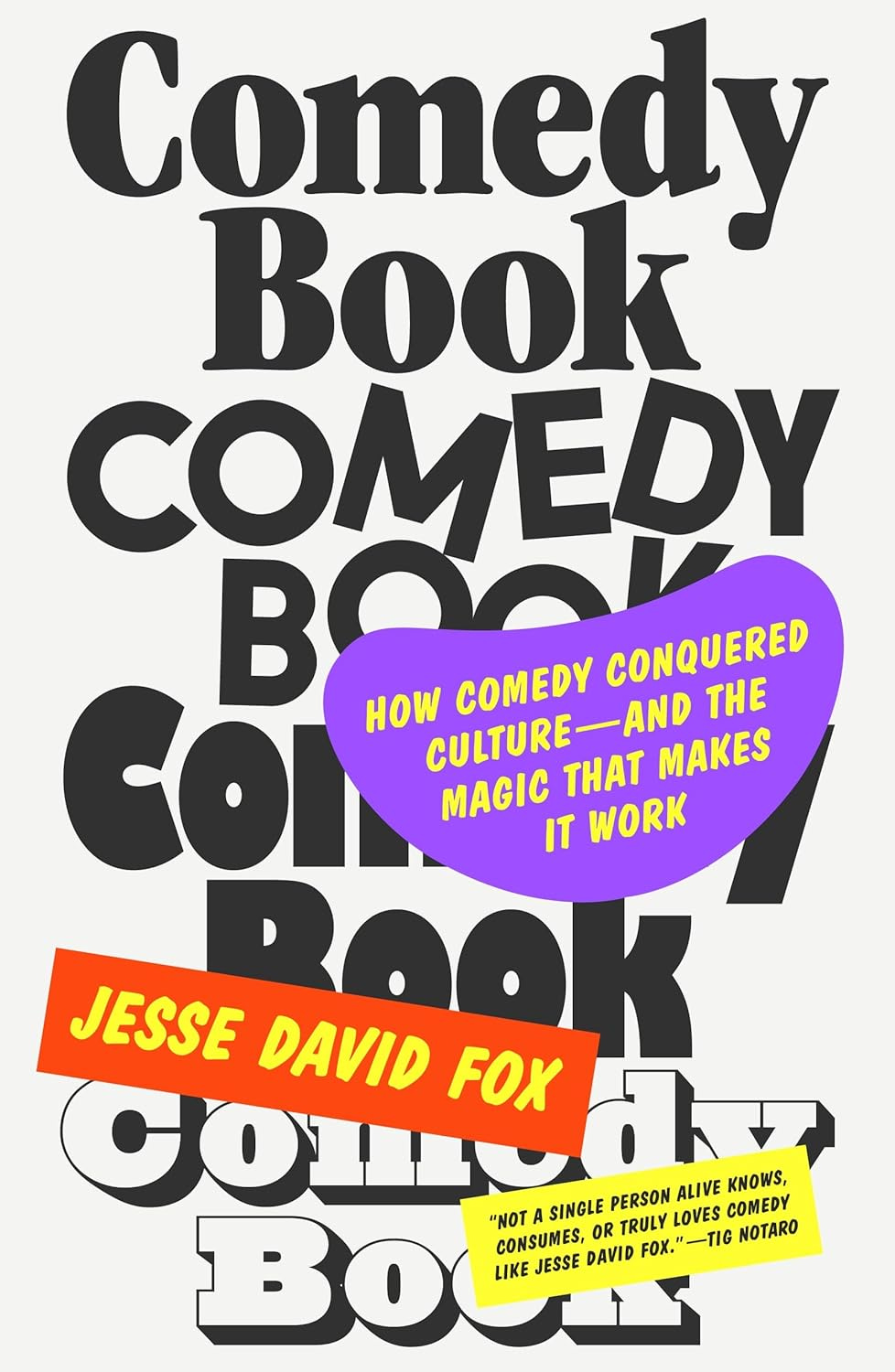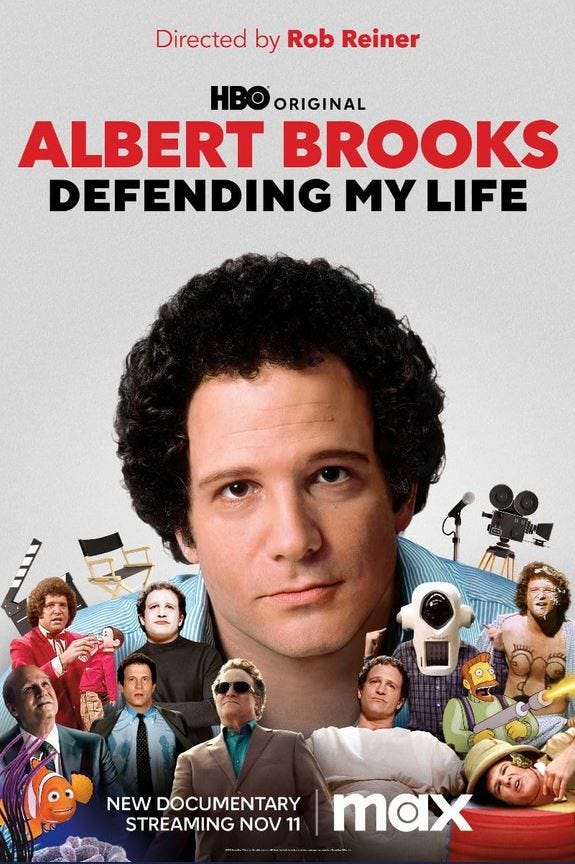C&C 23: Comedy, Compliments, and Spies
Plus an Amor y Amargo classic cocktail
For those of you celebrating Thanksgiving, a few recommendations to accompany your leftovers.
What I’m Reading
Comedy Book: How Comedy Conquered Culture—and the Magic That Makes It Work (2023), by Jesse David Fox. I’m at a loss to explain how 2023 became the year I immersed myself in comedy. Maybe I’m prepping for 2024, which is not exactly shaping up as a knee-slapper. For an authoritative take on the current state of funny business, you won’t find a better guide than Fox. He produces comedy shows, hosts a comedy-centric podcast, and reviews comedy for Vulture.
That last credit raises my primary issue with Comedy Book. It’s written in what I think of as Vulture voice: avid and chatty, a little too much so. I’ve read too many Vulture stories that are like having an overcaffeinated work friend who’s jockeying for bestie status lean into your cubicle, desperate to spill the tea before the boss happens by. The tone works in small doses, but at book length teeth will occasionally be gnashed. (John Early, one of Fox’s favorite comedians and mine, has a sharp joke in his latest special about Vulture.) When discussing the Mob’s control of nightclubs, Fox makes a crack about how gangsters of the 1940s did more than end sentences with “see?” And I thought, “Hold the wire, bub. You’ve already written several sentences that begin with ‘see.’ And not the ‘See Jane run’ variety, but ‘See, here’s the thing.’ Which would work if we were talking, see?”
A conversational tone spliced with heady quotes from academia doesn’t bode well, particularly given the subject matter. Fox cites E. B. and Katharine S. White: “Humor can be dissected, as a frog can, but the thing dies in the process and the innards are discouraging to any but the purely scientific mind.” A few times in Comedy Book’s early going, the frog doesn’t look too good.
See, here’s the thing. (Damn, that is infectious, isn’t it?) Fox’s deep knowledge of and boundless enthusiasm for comedy eventually sails over these hurdles and carries the day. He knows anyone who’s anyone, thinks deeply, and considers his subject from every conceivable angle. There’s a nuanced critique of Dave Chappelle that carries additional force because Fox clearly admires the comedian’s craft, and a defense of Adam Sandler motivated thusly: “lowbrow does not mean low quality.” Fox analyzes comedy in terms of timing, politics, truth—fascinating reading in the wake of the recent Hasan Minhaj dustup—the audience, and other aspects before closing on a personal note that is truly effective. Inspired by the passage on memes, I’ll say this: Find someone who looks at you the way Jesse David Fox looks at comedy.
What I’m Watching
Albert Brooks: Defending My Life (2023, HBO, or Max, or whatever we’re supposed to call it). The question is movie geek catnip. Name a director who not only made three great movies, but made them in a row. A few have pulled off the hat trick. Among them: Hitchcock, of course (Vertigo, North by Northwest, Psycho, The Birds). Preston Sturges’s never-to-be-duplicated stint at Paramount in the 1940s (The Lady Eve, Sullivan’s Travels, The Palm Beach Story, The Miracle of Morgan’s Creek, Hail the Conquering Hero). Francis Ford Coppola’s miracle run (The Godfather, The Conversation, The Godfather Part II, Apocalypse Now.)
My wild card answer has always been Albert Brooks. Sure, it may have taken him a little longer. Modern Romance (1981), Lost in America (1985), and Defending Your Life (1991) span a full decade. But each one is a comic masterpiece, and Defending Your Life remains the only film that I would join if it became a religion.
The man certainly deserves a documentary. Maybe I feel a little cheated because HBO dedicated four hours apiece to Garry Shandling and George Carlin while Brooks warrants a mere 88 minutes. But hey, those are 88 more minutes of Albert Brooks.
And Rob Reiner, who directed the film and is Brooks’s lifelong friend. Whole chunks of the movie are the two old buddies at a restaurant table giving each other grief. Reiner also being famous heightens the party atmosphere; he conducts the interviews with other luminaries himself, sometimes in his own home. Rob’s dad Carl Reiner publicly identified Brooks as the funniest person he knew when Brooks was sixteen. Sixteen!
The film covers every facet of Brooks’s career. Kudos to Kliph Nesteroff for digging up choice vintage clips of Brooks’s TV appearances; the ventriloquist bit remains absolute gold. There’s also plenty of time to salute Brooks the character actor. Entire generations only know him as the voice of the father in Finding Nemo (2003) or the heavy in Drive (2011). I love his turn as a Bernie Madoff-style crook in the Elmore Leonard adaptation Out of Sight (1998), but the great neglected Brooks performance is as the demented chief resident of the hospital in Critical Care (1997), directed by Sidney Lumet from a novel by Richard Dooling. The whole movie has been forgotten, which is unfortunate; it also boasts a terrific performance by Jeffrey Wright, as does pretty much every movie with Jeffrey Wright.
The documentary ends with Brooks recounting a story in which a Hollywood power broker tells him, “I don’t know why you always take the hard road.” Brooks replies, “You think I see two roads.” And thus speaks for every artist.
The Pigeon Tunnel (2023, on Apple TV+). Having read John le Carré’s memoir The Pigeon Tunnel (2021) as well as A Perfect Spy (1986), which fictionalized his troubled relationship with his con-artist father, I was familiar with the terrain covered in Errol Morris’s documentary. Still, there was much to enjoy, especially the gifted interlocutor Morris brazenly sizing up the former spy le Carré and asking at what point an interview becomes an interrogation. Le Carré, real name David Cornwell, proves so effortlessly charming even as he dissembles that anyone would yield a state secret or two to him. In related news, Cornwell’s son Nicholas will be writing a new George Smiley novel.
What I’m Thankful For
I’m grateful to Jancee Dunn of the New York Times for introducing me to Troy Hawke (actor/comedian Milo McCabe), the “mid-century matinee idol” who wanders the world complimenting complete strangers. His Instagram feed is a delight. Here’s Troy in action.
What I’m Drinking
Amor y Amargo, the storied New York temple of bitters and showplace for amari, will shutter its original East Village location at year’s end. I enjoyed every visit there. Chris Elford, now a Seattle bartending mainstay—you can find him most often at Here Today Brewery & Kitchen—was working there in 2011 when he created a modern classic.
I asked Chris about the Sharpie Mustache for Noir City magazine last year. He told me that the inspiration for its blended spirits base came from Amor y Amargo colleague Sother Teague: “He likes to say rye is spicy, gin is herbaceous—and herbs and spices work in fried chicken recipes, so why not in a cocktail?” Essential to the drink is the addition of tiki bitters. “I honestly don’t love the drink with other bitters,” Chris said, although he allowed that Angostura with some grated cinnamon on top would serve in a pinch.
As for the drink’s moniker? “The first woman I ever made it for asked me its name, and she was clearly feeling its effects. I remembered back in college days, when the rules were if you passed out with your shoes on, someone could draw on you with a Sharpie marker. So I jokingly said, ‘Oh, that? That’s the Sharpie Mustache.’ She was so tickled with the name that I knew it was a keeper.” So is the cocktail. I’ll be raising one or two to Amor y Amargo’s birthplace between now and New Year’s Eve.
The Sharpie Mustache, by Chris Elford
¾ oz. rye
¾ oz. gin
¾ oz. Bonal
¾ oz. Meletti
1 dash of tiki bitters
Stir. Strain over fresh ice in a chilled rocks glass. Garnish with an orange twist.



